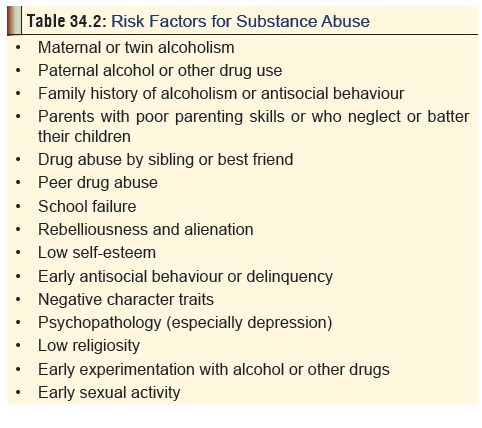Chapter: Modern Medical Toxicology: Substance Abuse: Substances of Dependence and Abuse
Classification - Substances of Dependence and Abuse
CLASSIFICATION
·
Ethanol
·
Tobacco
·
Tranquillisers and Sedatives
Barbiturates, benzodiazepines,
chloral hydrate, chlorme-thiazole, ethchlorvynol, glutethimide, hexapropymate,
meprobamate, methyprylon, methaqualone, zolpidem, zopiclone
·
Opiates and Opioids
·
Cocaine
·
Cannabis
·
Amphetamines and “Designer Drugs”
·
Hallucinogens
Lysergic acid diethylamide (LSD),
phencyclidine, psilo-cybine, bufotenine, mescaline, ketamine,
diethyltrypt-amine (DMT)
·
Inhalants
Fluorinated hydrocarbons (freons),
ethers, ketones, aromatic and aliphatic hydrocarbons
·
Miscellaneous Substances Caffeine, datura seeds, analgesics,
anabolic steroids, cough syrups, laxatives
Several of these compounds have been
discussed in detail elsewhere, and the reader is advised to consult the Index for locating them. The remaining
will be discussed inthis section.
Globally, of the various substances
abused, alcohol and tobacco head the list, followed by sedatives and
tranquillisers, cannabis, opiates, and cocaine. Amphetamines and hallucinogens
are less popular, though newer recreational drugs (“designer drugs”) are increasingly
being abused, especially by the youth. One American study found a life-time
prevalence of alcoholism of 13.5%, and a life-time prevalence of other drug
abuse of 6.1%. The WHO estimates that one third of the world popula-tion (15
years and above) abuses tobacco in some form or other. Currently, tobacco abuse
is said to be responsible for 3.5 million deaths worldwide every year, and if
the trend continues, the figure is expected to rise to 10 million deaths per
year by 2020.![]()
The most commonly abused drugs
(apart from alcohol and tobacco) in India appear to be cannabis, opiates, and
sedatives and tranquillisers. There are also indications of significant abuse
of cocaine, hallucinogens, and “designer drugs” among the upper classes of
society.
While it is a fact that many
individuals experiment with drugs especially in their youth, not all become
dependant on them. In fact, it is only a small proportion of susceptible
individuals who go on to become addicts. Table
34.2 lists some of the factors which predispose to dependence. Medical
professionals should be familiar with these risk factors which can help them to
identify potential abusers and take pre-emptive action whenever possible. It is
also important to be able to recognise signs and symptoms of drug abuse as well
as identify clues in the form of behavioural changes which point to
surreptitious abuse (Table 34.3).


Related Topics